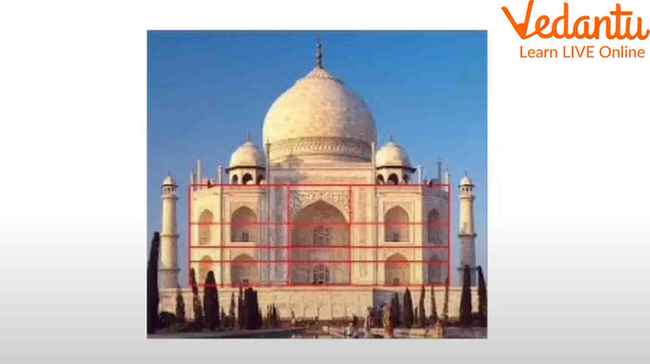What is Golden Ratio? How Can It Define Beauty?
What if you come to know that mathematics can be used to create art that is visually pleasing? The aesthetic value of creation can be increased by using mathematics and it has been proven using the examples of modern art and vintage architecture. Then, what is the mathematics behind it? It is called the golden ratio.
What is this golden ratio? How can we correlate it with the different forms of art? Does it have any specific rule? We will get into that later. First, we need to delve deeper into the mathematical interpretation of this ratio.
What is Fibonacci Series?
In 1200, Leonardo Fibonacci, a mathematician, discovered a unique mathematical sequence called the Fibonacci Series. In this series, the two successive numbers will be added to the next number in the sequence. So, if it starts from 0 then the sequence will look like this.
0, 1, 1, 2, 3, 5, 8, 13, 21…
If you look closely, you will find that the two consecutive numbers will represent the next number in the sequence. This series has a direct relation with the golden rectangle and golden ratio formula. Why it is called golden ratio when it is clearly a sequence? Let us find out.
What is Golden Ratio?
In simpler words, the golden ratio is the special number where a line is divided into two parts, a bigger and a smaller one. When the bigger part is divided by the smaller one, we get a ratio. It will be the same when the line segment is divided by the bigger part of this line segment. This is called the golden ratio. Amazing, isn’t it?
According to historians and architects, this ratio has been followed for ages to construct architectural marvels. We can even find the implementation of this ratio in famous art pieces. Let us take a quick look at its golden ratio history.
Who Discovered the Golden Ratio?
The use of the golden ratio goes back the Euclid, a Greek mathematician, logician, and geometer. He used this series and ratio but did not use the term and formulated a segment called Euclidian geometry.
The first known mention of this term was found in a letter written by Michael Mästlin in 1597. He wrote a letter to his former student Johannes Kepler, the designer of Kepler’s Law of planetary motion, and mentioned the ratio given as 0.6180340 to determine the length of the longer segment of a line.
Mathematical Interpretation of Golden Ratio
Now that we are aware of the history and what the golden ratio is, let us look into a few examples using mathematics to describe it.
According to the formula, if a line is divided into segment A and segment B where Segment A is greater than Segment B then the ratio of A and B will be equal to the ratio of (A+B) and A.
A/B = (A+B)/B
This ratio is often symbolised using the Greek letter Phi ‘Φ’. According to the calculations done by the experts, the golden ratio value comes out to be:
A/B = (A+B)/B = 1.618033988....
As this is a non-terminating non-recurring decimal, its value is considered as 1.618 approximately. You will be surprised to know that this number has been discovered in many aspects of life and has amazed mathematicians all over the world.
The Golden Rectangle from the Golden Ratio
A golden rectangle is a design where the sides of rectangles in it follow the Fibonacci Series or the golden ratio. It means that the lengths of the two adjacent rectangles will follow the ratio of 1.618. When these diagonal points of these rectangles are connected, the line forms a spiral with a logarithmic factor of 1.618.
Examples of Golden Ratio Architecture
1. Parthenon (447 - 438 BC)
This historical monument designed in Athens is a temple dedicated to the Greek gods. When the dimensions of this temple were measured by the architects, they find immense resemblance with the Fibonacci Series, the golden ratio and the golden rectangle design in the top of columns and roof alignment. This is why this Greek temple is visually quite pleasing.
2. Taj Mahal
Taj Mahal, one of the Seven Wonders of the World, has followed the same rule. Its golden rectangle and golden ratio project can be seen in proper alignment with the base of the main dome, the second level of the front minarets, and the top of the back minarets.

Golden Ratio in Taj Mahal
Also Read: Great Movies That Every Math Lover Needs To Watch
3. Conch of Shells
You have seen sea shells with spiral shapes sold in the souvenir shops when you visit a sea beach. Focus on the central part of a conch and observe how the spiral is progressing. It is nothing but the interpretation of the Fibonacci Series and one of the best golden ratio examples in nature.
4. Botanical Patterns
You will find a plethora of golden ratio examples in nature. Look at the branching style of a tree. The ratio of length to width of the branches formed is very close to the golden ratio. Petals formed from a floral pattern also follow this ratio in lily, buttercups, etc.
5. Spiral Galaxies
The images of spiral galaxies taken by the mightiest telescopes have shown how the universe follows the golden ratio formula. Even the stars follow the same ratio to move and align themselves accordingly in some galaxies.
Golden Ratio Everywhere
We are surrounded by this ratio everywhere. The scale and proportion in architecture in the modern days follow it as a thumb rule to add visual aesthetics and satisfaction. This ratio is a natural pattern identified and implemented in many manmade things across the world. From Leonardo da Vinci to modern photography, the golden ratio is used everywhere.







